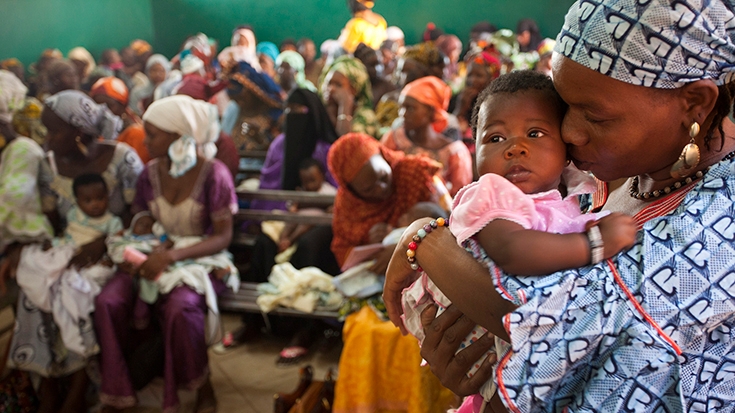Context
Poverty is a major cause of ill health and a barrier to accessing health care when needed. This relationship is financial: the poor cannot afford to purchase those things that are needed for good health, including sufficient quantities of quality food and health care. But, the relationship is also related to other factors related to poverty, such as lack of information on appropriate health-promoting practices or lack of voice needed to make social services work for them.
Ill health, in turn, is a major cause of poverty. This is partly due to the costs of seeking health care, which include not only out-of-pocket spending on care (such as consultations, tests and medicine), but also transportation costs and any informal payments to providers. It is also due to the considerable loss of income associated with illness in developing countries, both of the breadwinner, but also of family members who may be obliged to stop working or attending school to take care of an ill relative. In addition, poor families coping with illness might be forced to sell assets to cover medical expenses, borrow at high interest rates or become indebted to the community.
Strong health systems improve the health status of the whole population, but especially of the poor among whom ill health and poor access to health care tends to be concentrated, as well as protect households from the potentially catastrophic effects of out-of-pocket health care costs. In general, poor health is disproportionately concentrated among the poor.
The World Bank’s work in the area of health equity and financial protection is defined by the 2007 Health, Nutrition and Population Strategy. The strategy identifies “preventing poverty due to illness (by improving financial protection)” as one of its four strategic objectives and commits the Bank’s health team, both through its analytical work and its regional operations, to addressing vulnerability that arises from health shocks.
The strategy also stresses the importance of equity in health outcomes in a second strategic objective to "improve the level and distribution of key health, nutrition and population outcomes... particularly for the poor and the vulnerable".
The Bank supports governments to implement a variety of policies and programs to reduce inequalities in health outcomes and enhance financial protection. Generally, this involves mechanisms that help overcome geographic, social and psychological barriers to accessing care and reducing out-of-pocket cost of treatment. Examples include:
- Reducing the direct cost of care at the point of service, e.g. through reducing/abolishing user fees for the poor or expanding health insurance to the poor (including coverage, depth and breadth).
- Increasing efficiency of care to reduce total consumption of care, e.g. by limiting “irrational drug prescribing,” strengthening the referral system, or improving the quality of providers (especially at the lower level).
- Reducing inequalities in determinants of health status or health care utilization, such as reducing distance (through providing services closer to the poor), subsidizing travel costs, targeted health promotion, conditional cash transfers.
- Expanding access to care by using the private sector or public-private partnerships.
The Bank’s health team also promotes the monitoring of equity and financial protection by publishing global statistics on inequalities in health status, access to care and financial protection, as well as training government officials, policymakers and researchers in how to measure and monitor the same.
Examples of how World Bank projects have improved health coverage for the poor and reduced financial vulnerability include:
The Rajasthan Health Systems Development Projectresulted in improved access to care for vulnerable Indians. The share of below-poverty line Indians in the overall inpatient and outpatient load at secondary facilities more than doubled between 2006 and 2011, well exceeding targets. In the same period, the share of the vulnerable tribal populations in the overall patient composition tripled.
The Georgia Health Sector Development Project supported the government of Georgia in implementing the Medical Insurance Program for the Poor, effectively increasing the share of the government health expenditure earmarked for the poor from 4% in 2006 to 38% in 2011. It also increased the number of health care visits of both the general population and the poor, but by more for the poor (from 2 per capita per year to 2.6) than for the general population (from 2 to 2.3) over the same time period.
The Mekong Regional Health Support Project helped the government of Vietnam to increase access to (government) health insurance from 29% to 94% among the poor, as well as from 7% to 68% among the near-poor. Hospitalization and consultation rates, at government facilities, also increased among both the poor and near-poor.
